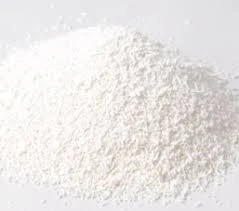
dimethyl disulfide dmds
Dimethyl Disulfide A Comprehensive Overview
Dimethyl disulfide (DMDS) is an organosulfur compound with the molecular formula C2H6S2. It is recognized for its distinct odor, often reminiscent of the smell of rotting vegetables or garlic, which can be attributed to its sulfur content. As a colorless liquid at room temperature, DMDS is both a naturally occurring and industrially manufactured substance, wielding significant importance in various fields from agriculture to petrochemicals.
Chemical Structure and Properties
The chemical structure of dimethyl disulfide consists of two methyl groups (–CH3) linked by a disulfide bond (–S–S–). This configuration contributes not only to its physical properties but also to its reactive nature. DMDS has a boiling point of 36.5 °C (97.7 °F) and a density of approximately 1.010 g/cm³, making it relatively volatile.
One of the striking characteristics of DMDS is its ability to participate in various chemical reactions. It can act as a reducing agent and a source of sulfur in numerous chemical transformations. Because of this reactivity, DMDS is valued in many synthetic pathways, especially in the synthesis of sulfur-containing compounds.
Applications in Agriculture
DMDS plays a crucial role in agriculture, particularly as a soil fumigant. Its effectiveness in controlling soil-borne pests and pathogens has made it a go-to choice for crop management. When applied to the soil, DMDS volatilizes, penetrating the soil profile and creating a toxic environment for harmful microorganisms, nematodes, and weed seeds. The application of DMDS is particularly beneficial for high-value crops such as strawberries and vegetables, where the health of the soil directly influences crop yield and quality.
Furthermore, DMDS is increasingly being used in integrated pest management (IPM) strategies because it can reduce the reliance on chlorine-based fumigants, which can have detrimental effects on the environment. By transitioning to DMDS, farmers can implement safer and more sustainable pest control measures.
dimethyl disulfide dmds

Industrial Uses
In addition to its agricultural applications, dimethyl disulfide is utilized in various industrial processes. It is often employed in the synthesis of fine chemicals and pharmaceuticals due to its role as a sulfur source. For instance, DMDS is used in the manufacture of sulfur-containing drugs and is significant in the production of certain agrochemicals.
DMDS is also an integral part of oil and gas operations. It is utilized in the petroleum refining process as a scavenger for metal ions, helping to prevent catalyst poisoning in refining units. Additionally, it serves as a solvent in certain chemical reactions and processes, aiding in the extraction of desired compounds from crude oil.
Environmental Considerations
Despite its numerous applications, the production and use of DMDS raise some environmental concerns. Like other sulfur compounds, DMDS can contribute to atmospheric sulfur levels, which can lead to the formation of acid rain. Additionally, although it is less hazardous than some alternatives, proper handling and storage of DMDS are crucial to minimize risks associated with inhalation or skin contact.
Regulatory agencies, including the Environmental Protection Agency (EPA), monitor the use of DMDS in agriculture and industry to ensure that it does not pose significant risks to human health or the environment. Users are encouraged to follow safety guidelines and best practices to mitigate potential hazards.
Conclusion
Dimethyl disulfide is a multifaceted compound with a diverse range of applications across various sectors. Its effectiveness as a soil fumigant in agriculture and as a chemical precursor in industrial processes highlights its versatility. Nonetheless, as with many chemical substances, a balanced approach towards its use, taking into account safety, efficacy, and environmental impact, is essential. Continued research and development will likely enhance our understanding of DMDS, ensuring its application remains beneficial while minimizing potential drawbacks. As industries strive for more sustainable practices, compounds like DMDS may play a pivotal role in achieving these goals.
-
Understanding Synthetic Rubber OptionsNewsApr.27,2025
-
Trichloroisocyanuric Acid: Essential for Clean and Safe WaterNewsApr.27,2025
-
Sodium Dichloroisocyanurate: Key to Safe Water TreatmentNewsApr.27,2025
-
Sodium Acid Pyrophosphate: Essential in Modern Food ProcessingNewsApr.27,2025
-
Essential Water Treatment ChemicalsNewsApr.27,2025
-
Denatured Alcohol and Its Industrial UsesNewsApr.27,2025
-
The Versatile Uses of Sodium BicarbonateNewsApr.24,2025
Hebei Tenger Chemical Technology Co., Ltd. focuses on the chemical industry and is committed to the export service of chemical raw materials.
-

view more DiethanolisopropanolamineIn the ever-growing field of chemical solutions, diethanolisopropanolamine (DEIPA) stands out as a versatile and important compound. Due to its unique chemical structure and properties, DEIPA is of interest to various industries including construction, personal care, and agriculture. -

view more TriisopropanolamineTriisopropanolamine (TIPA) alkanol amine substance, is a kind of alcohol amine compound with amino and alcohol hydroxyl, and because of its molecules contains both amino and hydroxyl. -

view more Tetramethyl Thiuram DisulfideTetramethyl thiuram disulfide, also known as TMTD, is a white to light-yellow powder with a distinct sulfur-like odor. It is soluble in organic solvents such as benzene, acetone, and ethyl acetate, making it highly versatile for use in different formulations. TMTD is known for its excellent vulcanization acceleration properties, which makes it a key ingredient in the production of rubber products. Additionally, it acts as an effective fungicide and bactericide, making it valuable in agricultural applications. Its high purity and stability ensure consistent performance, making it a preferred choice for manufacturers across various industries.











